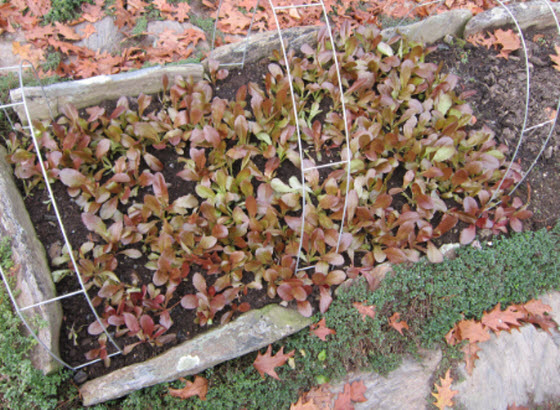
Learn How to Use DIY Row Covers in Your Garden
ADVERTISEMENT
Hi Celeste Longacre,
From this valuable description I am getting huge interest on gardening. Pictures are so much helpful to know the actual use of tomato cages and their advantages. Every beginners should read this details. Thanks a lot for sharing this with us.
Mistakes are instructive. One lesson I've learned about extending the growing season is to plant seeds that are not dependent on pollinators, and another is to not use tomato cages as props for plastic sheets unless one is prepared to go out after each rainfall and empty the pools of water that form in the top of each cage.
Next year we plan to run a line between opposite fence poles and drape the plastic over that so it hangs like a tent.
Not only will it not collect rain, if we do it correctly I will be able to lift the flap and walk right in.
Thanks, Alice, for your kind comments! Good luck with your gardening. It does take some effort, but it is well worth it.
Sorry my post appears as its own comment and not a reply to yours, Celeste.
I came to this comment via an e-mailed link, clicked "reply," composed a response in the box provided under my user name, and clcked "send." Even though the web site recognized me, I had to log on again before it would acept my reply, and then it seemed to think I was replying to your blog entry.
I'm not sure why this keeps happenng -- the same thing happened when I posted my original comment. Kind of annoying!
If you continue to have problem with posting replies to comments please contact almanacsupport@yankeepub.com. Thank you.
No tomatoes, just the cages. :-)
I soaked the spinach seeds for 24 hours before planting them, and I turned on the soaker hose for that row every morning for a week. :-( Perhaps they weren't as fresh as I thought. Next year I'll get them from Johnny's.
Yes, I finally figured out that my sugar snap peas might be blooming but without pollinators they won't do much else. Guess I should brush a feather back & forth across them, eh?
We're experimenting this year using plastic over tomato cages placed at regular intervals down one row. We used the cages as we've never done this sort of thing before and didn't want to spend money on hoops we might never use again.
Unfortunately none of the spinach I planted in August germinated -- zero, zip, nada -- and I was too annoyed and time-challenged to try again in September, so all that's covered is a half row of sugar snap peas and a few bush beans.
The only trick so far is keeping the plastic from sagging into the top of the tomato cages when it rains. We are't harvesting much -- perhaps we shouldn't have tried peas and beans!
Hi JBL55,
Sorry to hear about your spinach. August can be terribly hot and dry. Did you keep the top 1/2 inch of soil moist? It can be quite a challenge to do so. Your tomatoes should be okay for a while. Also, peas and beans, once they flower, they need the bees to come and pollinate them. If you have small beans and pea pods, they should grow. Good luck!


















